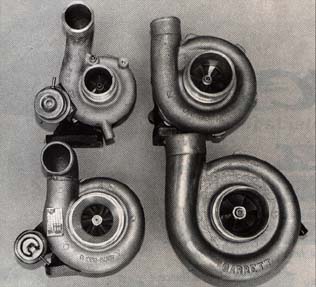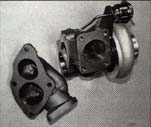 |
||||||
| Tech Tips | The Quest For Turbo Boost |
|||||
| More
Power & A Squeaky voice; Hey, it's Just Like Steroids! BIGGER TURBOS A wonderful little thing, this turbo. Hands down, it's the most efficient way to increase the horsepower output of your car. Think of the world's most renowned sports cars. At least half (examples being the Porsche 911 Turbo, the Lotus Esprit Turbo, and the Nissan Skyline) use a turbo system. If you want power, and lots of it, you need one, too. Getting more power out of a turbo is a deceptively simple matter of generating additional boost pressure. For enthusiasts looking for more power out of a turbo car, the choices are increasing the output of their vehicle's stock turbo, or, when that's not enough, replacing the stock turbo with a larger or better turbo. The problem with a bigger turbo is the resulting turbo lag. A large turbo doesn't spool up as quickly and will be less responsive at low engine rpms. On a racetrack this isn't much of a problem, but on the street it can really hamper performance. Whether you're installing a larger turbo on a factory turbo car or
adding a turbocharger to a normally aspirated car, critical attention
must be paid to a number of factors. These include additional fuel,
ignition timing, compatibility with the factory computer, and
compression ratio.
On factory turbo cars, extra power often comes in the form of extra boost. Turbo cars from the factory are set at a predetermined and generally conservative level (usually around 5-12 psi). But from experience, performance tuners have learned that additional boost and fuel can be used without harming the engine. On a stock turbo, the job of gaining additional boost falls in the hands of a boost controller. They range from simple manual controllers (inexpensive) to sophisticated electronic controllers (expensive). Both take control of the turbo's waste gate in order to generate the desired boost. While inexpensive, manual controllers are usually mounted in the engine bay, requiring the driver to get out of the vehicle whenever a change in boost is desired. Electronic controllers generally offer more precise control over boost and have additional safety and performance features. |
||||||


